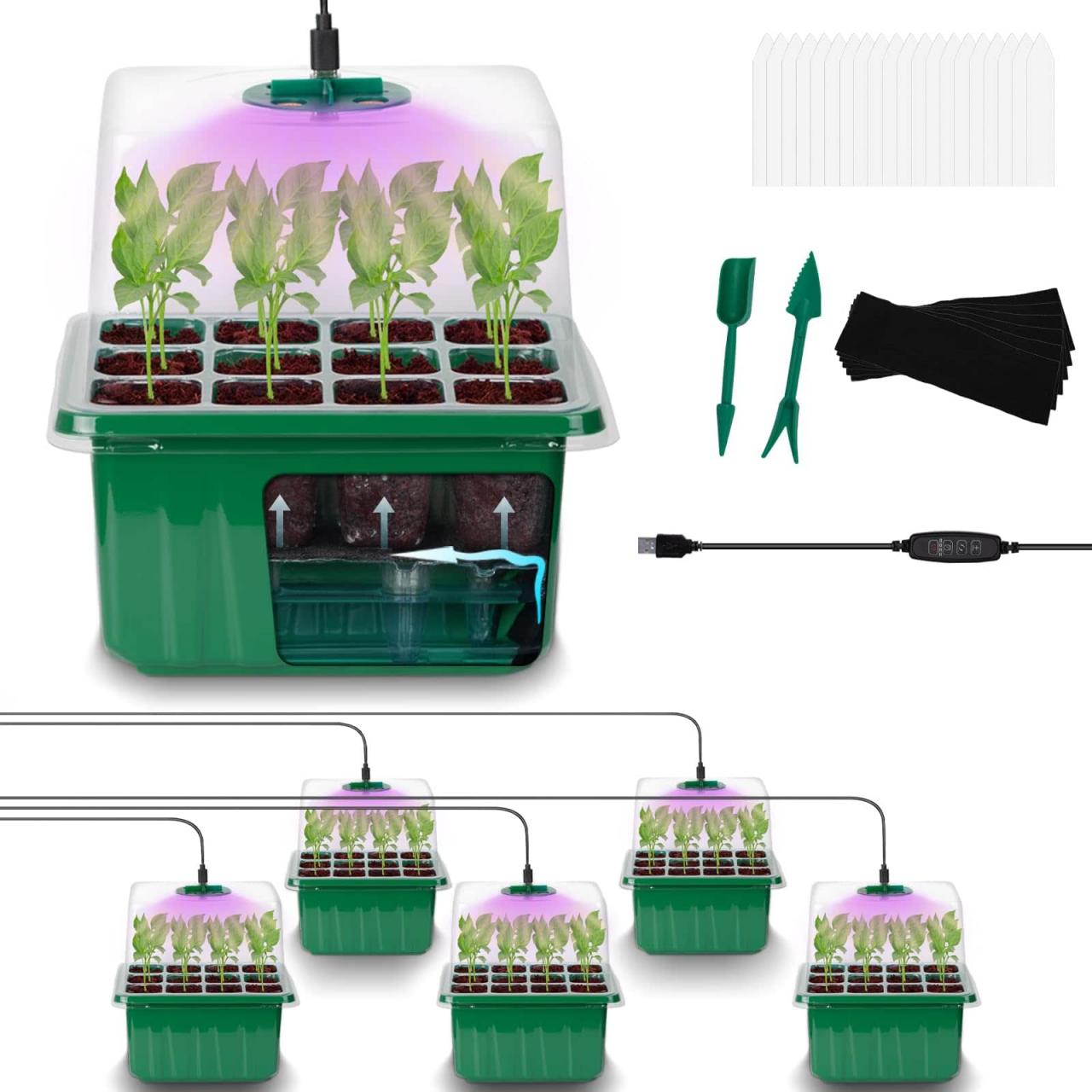Starting seeds indoors can be a rewarding and cost-effective way to grow a variety of plants, from vegetables to herbs and flowers. However, it can also be a delicate process that requires consistent moisture, proper lighting, and the right growing environment. Self-watering seed starter trays offer a convenient solution for busy gardeners or those new to seed starting, providing a controlled and efficient way to nurture seedlings from seed to transplant.
What is a Self-Watering Seed Starter Tray?
A self-watering seed starter tray is a specialized kit designed to simplify the seed starting process. It typically consists of a tray with individual cells or compartments, a reservoir for holding water, and a self-watering mechanism that allows the seedlings to draw moisture as needed. Some kits also include additional features such as humidity domes, grow lights, and adjustable vents for optimizing growing conditions.
Benefits of Using a Self-Watering Seed Starter Tray
Using a self-watering seed starter tray offers several advantages for indoor gardeners:
Consistent moisture: The self-watering system ensures that seedlings receive a steady supply of water, reducing the risk of over or under-watering.
Healthier root development: By providing a consistent moisture level, self-watering trays promote stronger and more robust root systems in seedlings.
Reduced maintenance: With a self-watering tray, gardeners can spend less time manually watering and monitoring soil moisture levels.
Versatility: Many self-watering kits are suitable for a wide range of plants, from vegetables and herbs to flowers and succulents.
Features to Look for in a Self-Watering Seed Starter Tray
When choosing a self-watering seed starter tray, consider the following features:

Tray material: Look for trays made from durable, non-toxic materials such as BPA-free plastic or PVC. These materials should be sturdy, easy to clean, and reusable for multiple growing seasons.
Cell size and quantity: Determine the number and size of cells needed based on the types of plants you plan to grow. Larger cells are better suited for plants with more extensive root systems, while smaller cells work well for delicate seedlings.
Reservoir capacity: Consider the size of the water reservoir and how often it needs to be refilled. A larger reservoir can provide a longer period between refills, reducing maintenance time.
Humidity control: Some kits include humidity domes or adjustable vents to help maintain optimal moisture levels and promote healthy growth.
Grow lights: For indoor gardeners, a self-watering tray with built-in grow lights can provide the necessary light for seedlings to thrive, especially during the winter months or in low-light conditions.
Top Self-Watering Seed Starter Tray Kits
Based on the search results and customer reviews, here are some of the top self-watering seed starter tray kits available:
ZHOLAH Self-Watering Seed Starter Tray Kit with Grow Light and Humidity Dome: This kit features a 6-pack of 72-cell trays made from sturdy PVC material. It includes an adjustable grow light, humidity domes, and a self-watering system for consistent moisture. The trays have drainage holes to prevent overwatering and promote healthy root growth.
GrowEase Seed Starter Kit: This earth-friendly kit from Gardener’s Supply Company offers a simple and effective self-watering system. It includes a reservoir tray that keeps seedlings consistently moist, making it ideal for larger seeds like pumpkins, tomatoes, and sunflowers.
Self-Watering Seed Starter Kit from Thompson & Morgan: This kit contains 35 coir plugs, a plastic reservoir tray, and a clear plastic lid to maintain a warm atmosphere for optimal seed germination. It’s suitable for sowing larger seeds and eliminates the need for “pricking out” seedlings.
When using a self-watering seed starter tray, it’s essential to follow the manufacturer’s instructions carefully. This includes properly filling the reservoir, monitoring water levels, and ensuring adequate light exposure for the seedlings. With the right self-watering tray and proper care, indoor gardeners can enjoy a successful and rewarding seed starting experience.